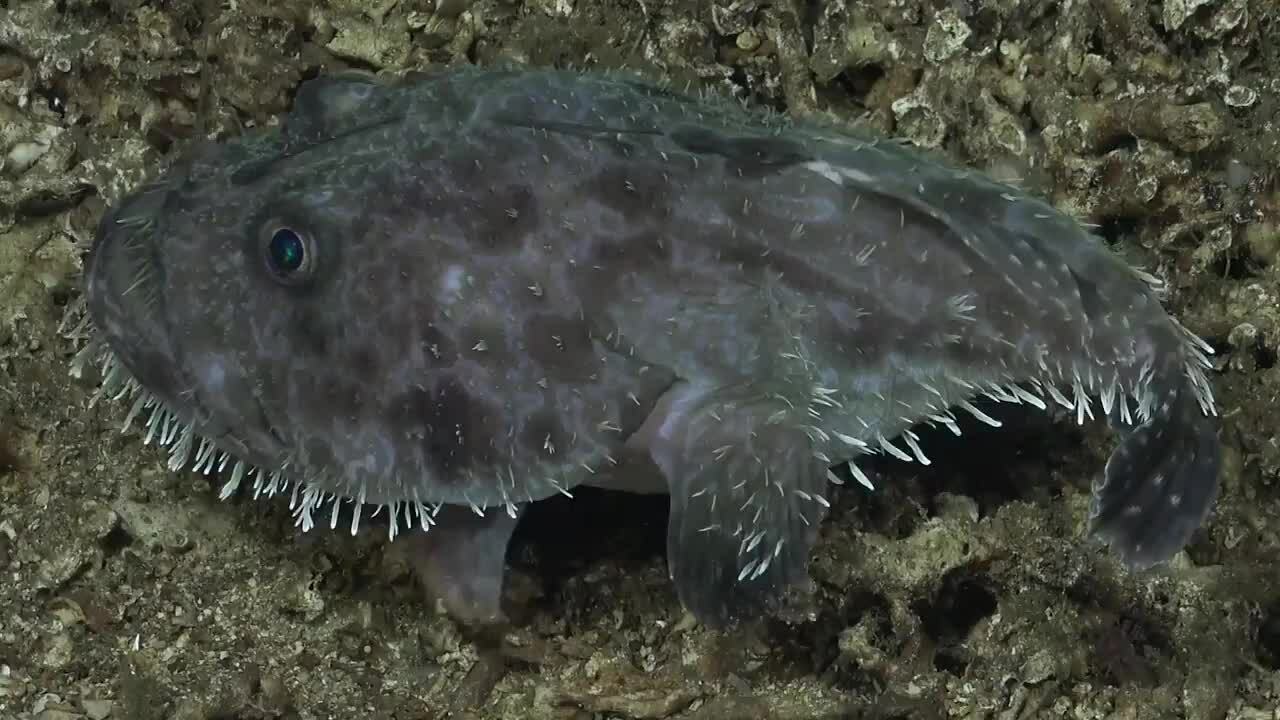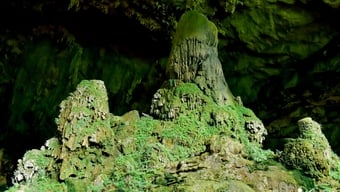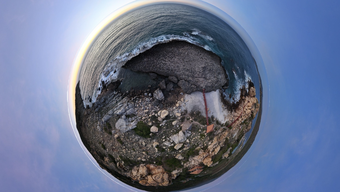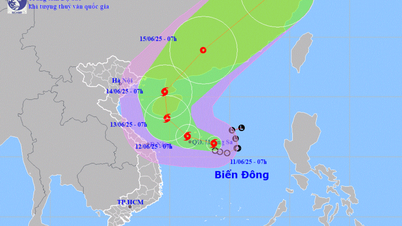Researchers have released rare footage of a strange-looking goosefish, or "sea devil", walking on its fins on the ocean floor.
"Sea Devil" Fish Walks on the Ocean Floor. Video : Live Science
New footage, captured 1,200 feet (373 meters) below the surface of the Galapagos Islands, shows the sea devil fish using its articulated pelvic and pectoral fins to walk steadily across the reef, Live Science reported on November 1. Experts captured the footage during an October expedition led by the Schmidt Ocean Institute, the Galápagos National Park, and the Charles Darwin Foundation to map the Galapagos' vertical reefs.
The strange creature in the video is a goosefish, or "sea devil" fish, belonging to the family Lophiidae in the order Lophiiformes , but the exact species is unknown. Goosefish can live at depths of up to 900 m. They have very large heads compared to short, slender bodies, are usually mottled reddish-brown in color and are covered with bristles.
Goosefish have jointed fins that can rotate and be used like feet. Their large mouths help them swallow prey as large as themselves. Fishermen call goosefish "sea devils" because of their strange appearance. They can grow up to 1.4 m long and weigh about 22 kg.
Goosefish have distinctive “devices” on their heads that lure prey closer. They lie in wait and when prey comes, they lunge forward, using all their energy reserves to catch it. They mainly eat fish, but also crustaceans such as lobsters. The goosefish’s teeth are angled back towards the back of the mouth, preventing prey from escaping.
“One thing that really stands out about goosefish is that their bodies are optimized to be extremely well-suited to a low-energy lifestyle,” said Jethro Reading, a deep-sea fish expert at the University of Southampton. They don’t waste energy running away from predators, he added, but instead hide on the seafloor.
Their ability to walk underwater is another way they conserve energy. “Their awkward, inelegant gait in the video, even when disturbed by a remotely operated vehicle (ROV), shows how little energy they expend. They’re built for quick bursts of action,” Reading said.
Thu Thao (According to Live Science )
Source link







































































































Comment (0)